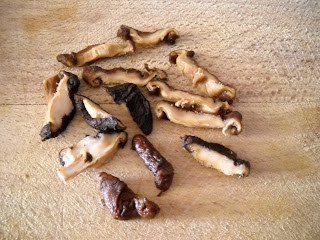Gli allergici ai pollini (in Italia sono circa cinque milioni) non devono solo temere questa o quella pianta in fase di pollinazione ma fare attenzione anche alle cosiddette "cross-reattività".
Ovvero alle allergie che alcuni pollini possono scatenare in chi ingerisce certa frutta e verdura.
Ovvero alle allergie che alcuni pollini possono scatenare in chi ingerisce certa frutta e verdura.
Chiediamo il perché a due esperti di Humanitas, la dott.ssa Lucia Testoni e il dott. Massimo Giorgino, specialisti in Allergologia e Immunologia Clinica, presso l’Unità Operativa diretta dal dott. Michele Ciccarelli.
"È frequentemente rilevata una cross-reattività tra pollini di alcune famiglie e vari alimenti vegetali”, spiega la dott.ssa Testoni che precisa: “Il contatto con alcuni alimenti vegetali in pazienti allergici ad alcune famiglie di pollini può determinare una sindrome orale allergica con fenomeni irritativi a labbra e cavo orale: il sintomo più comune è rappresentato dal prurito al palato, ma può comparire anche gonfiore delle labbra, fino ad edema della glottide. A volte l’ingestione di questi alimenti vegetali cross-reattivi può provocare anche manifestazioni cutanee o respiratorie come ad esempio asma bronchiale. Sono stati descritti anche casi di choc allergico. Tra le cross reattività più frequenti quella tra mela e betulla che si osserva nel 30-70 per cento dei pazienti allergici a pollini di betulla”.
"La sindrome orale allergica si manifesta pochi minuti dopo il contatto con alcuni alimenti vegetali", aggiunge il dott. Giorgino, "e si osserva in otto-dieci pazienti allergici a pollini ogni cento". È utile quindi che chi è allergico ed ha manifestato fenomeni di cross reattività conosca i "legami" tra piante e alimenti vegetali. I più noti sono questi:
- pollini di graminacee crociano con frumento, anguria, melone, limone, arancia, prugna, pesca, albicocca, ciliegia, kiwi, mandorla, pomodoro, arachide;
- pollini di parietaria con gelso, basilico, pisello, melone, ciliegia, pistacchio;
- pollini di betulacee con mela, pera, fragola, lampone, prugna, pesca, albicocca, ciliegia, mandorla, sedano, finocchio, carota, prezzemolo, kiwi, arachide, noce, nocciola;
- pollini di composite con miele di girasole o di tarassaco, camomilla, olio e semi di girasole, margarina, dragoncello, genepy, lattuga, cicoria, sedano, finocchio, carota, prezzemolo, anguria, melone, mela, castagna, pistacchio, banana, arachide, noce, nocciola.
"La sindrome orale allergica si manifesta pochi minuti dopo il contatto con alcuni alimenti vegetali", aggiunge il dott. Giorgino, "e si osserva in otto-dieci pazienti allergici a pollini ogni cento". È utile quindi che chi è allergico ed ha manifestato fenomeni di cross reattività conosca i "legami" tra piante e alimenti vegetali. I più noti sono questi:
- pollini di graminacee crociano con frumento, anguria, melone, limone, arancia, prugna, pesca, albicocca, ciliegia, kiwi, mandorla, pomodoro, arachide;
- pollini di parietaria con gelso, basilico, pisello, melone, ciliegia, pistacchio;
- pollini di betulacee con mela, pera, fragola, lampone, prugna, pesca, albicocca, ciliegia, mandorla, sedano, finocchio, carota, prezzemolo, kiwi, arachide, noce, nocciola;
- pollini di composite con miele di girasole o di tarassaco, camomilla, olio e semi di girasole, margarina, dragoncello, genepy, lattuga, cicoria, sedano, finocchio, carota, prezzemolo, anguria, melone, mela, castagna, pistacchio, banana, arachide, noce, nocciola.
E queste sì che sono delle belle scoperte. Dunque, devo evitare tutti gli alimenti buoni e gustosi della stagione. Mi sa che perderò un pò di chili........
Ora cerco di stare meglio e mi fermo qua. Spero di avere qualcosa di più allegro o qualche ricettina simpatica da pubblicare, perché no?









